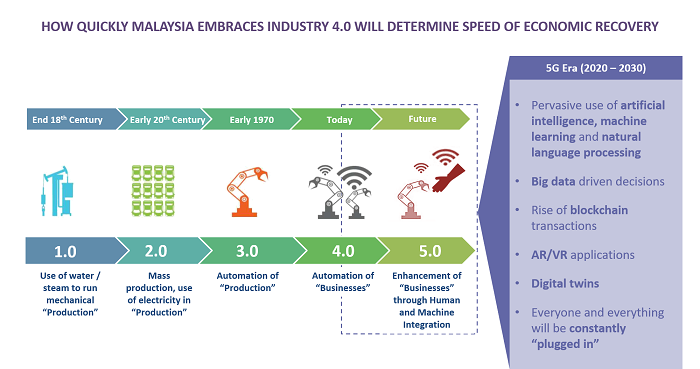Role of telecom sector in endemic phase embracing the new digital norm
By Gayan Koralage June 3, 2020

The Covid-19 pandemic is moving into an endemic phase. This means the disease if not eradicated. Instead it is regularly found among particular people or in certain areas in the world. When the cases begin to rise, say another wave, it gets reclassified as an epidemic and as it gets settled it goes back to the endemic phase. And communities learn to live with it.
As COVID-19 becomes endemic, the responsibility of prevention shifts from the government to the individual. So instead of government agencies actively controlling spread of the virus, we become responsible in the coming years, perhaps till vaccination is found. In this phase government’s focus shifts from protecting lives, to protecting livelihoods and reviving the national economy.
After successfully flattening the curve, Malaysian Prime Minister has outlined a six-prong strategy for resolution, resilience, restart, recovery, revitalization and reform of the national economy. The economic impact of the two-month long lockdown will result in poor economic performance for Malaysia in 2020. Bank Negara Malaysia projects Malaysia’s gross domestic product (GDP) growth to be between -2% and 0.5%.

So, what is the role of the telecom sector in recovering from this crisis in 2020, and help economy attain high GDP growth in 2021?
In an endemic world without a vaccine, we need to focus on three things,
- Anticipate risk of a second wave – and prepare for it.
- Get used to the new normal – as old normal may not return anytime soon, even if a vaccine is found.
- Help economic revival.
During the MCO period, it is simple: “I stay at work for you, you stay home for us.” Hence, we reduce immediate risk of a second wave such as in Singapore. Covid-19 has shifted all our daily routines completely into digital form. The telecom sector enables this completely digital lifestyle, and connect with the world – through the mobile.
Since the lockdown, our telecom industry has observed new trends in the last three months:
- 30% surge in per capita mobile data usage
- Change in peak time from 9 - 11 pm to daytime
- Growth in web traffic driven by work from home, e-education, e-commerce, tele-medicine
- Shift in nature of use to increase in use of VPNs, video streaming, online purchases especially of groceries, communications apps like Zoom, Jitsi, MS Teams for work and socializing
- Shift of data hotspots from commercial districts to suburbs
- Fall in mobile and fixed broadband speeds by 17% and 3% respectively, in late April compared to early 2 March 2020
Based on above new trends, telcos have the following responsibilities:
First and foremost, continue keeping the network up. The most important thing is to continue providing 99.99% desired uptime so that we can continue our daily routines.
Second, build the incremental radio access capacity at the earliest. Under the Pakej Rangsangan Ekonomi Prihatin Rakyat (PRIHATIN), MNOs expect to invest an additional RM400 million by June, solely to increase network coverage and capacity to prepare for the new normal. In the initial phase of economic recovery, it means:
- Deploying more equipment to increase coverage in residential sites. If new capacity is needed in residential areas, provide temporary sites, cell on wheels or rapid deployment units
- Shift of discretionary and initiative capex expenditure to business as usual to maintain better uptime. This may include precision re-planning of the network, identifying network gaps via analytics and AI truck rolling to the location
- Focus on use cases for better end user experiences. For example, if online purchase or e-sports continue to remain high as anticipated, provide processing closer to the residential hotspots via edge computing
- Go digital for customer care services
- Introduce different data plans for GenZ and millennials, that bundle stay at home use case and higher data quota
- Build infrastructure to support a robust social impact layer for all – promote e-education, e-health, distance learning, free educational channels, continue free data for community centres, hospitals, enforcement agencies
Third, improve digital readiness of industries to reach steady state, in recovery from Covid-19. Key industries for Malaysian recovery – tourism, transport, manufacturing, startup community, manufacturing, retail - must embrace digitization in 2020, to reach steady state by 2021:
- Build a resilient arrival ecosystem to be first Asian destination to welcome back international tourists. For instance, British Airways, Qantas and EasyJet are using biometric boarding that allows passengers to board, using face as passport, to reduce contact. KLIA must exclusively demand online check-ins and contactless payment.
- Ensure 5G rollout for Q3, 2020 is on track. 5G is all about high-speed, low-latency internet. You can download the movie “Parasite” in one-tenth of a second. You can play the “Rocket League” game with zero latency gap. It also delivers a better cost per GB so that users could have unlimited data even after free internet quota is lifted. It would also allow ambulances, schools / universities, hospitals, law enforcement units to have their own “sliced private networks.”

- Develop digitization use-cases across industries. Malaysian Digital Economy Corporation (MDEC) must proactively incentivize companies as well as entrepreneurs, to encourage use of Digi and MDEC’s 5G Open Lab as a collaborative space for testing 5G use cases. For instance:
- Test use of in anticipation of second wave or another new virus within the decade, in carrying out guidance, disinfection, cleaning and drug-delivery duties, while reducing the risk of cross-infection among medical staff.
- Test use case of smart manufacturing powered by analytics, AI, and advanced robotics to run at maximum efficiency, optimizing and adjusting assembly line processes in real time. If Malaysian manufacturers can attract foreign direct investments due to global supply chain reconfiguration away from, China, then we will recover faster than the rest as global demand picks up.
- Test use case for smart retailers, due to Covid-induced closure of brick-mortar stores, to use computer vision to manage inventory, improve warehouse operations, and use AR/VR for better product information.
- Test intelligent transport systems that do away with a human driver (i.e. exposure to potential disease carrier), vehicle-to-infrastructure and vehicle-to-vehicle communications can prevent collisions, enable various levels of vehicle autonomy, and improve traffic flow.
- Test AI-powered decision support tools for faster and more accurate diagnoses. Data can flow seamlessly throughout entire medical systems to smooth operations and coordinate care.
- Expedite deployment under the National Fiberisation and Connectivity Plan (NFCP). MNOs must be incentivized further to ensure that East Malaysia recovers at the same pace as West Malaysia.
- Prioritize any additional increase beyond current RM10 billion for small and medium enterprises under the PRIHATIN, for financing technology startups.
- Upskill labour force to be readily employed by businesses that use big data, blockchain, artificial intelligence, and IoT. GenZ have been affected 3x by Covid-induced layoffs compared to their counterparts. Telecom jobs in radio frequency planning, telecom engineering, field operations will no longer survive the decade starting 2020.
This is the dawn of a new normal. Telecom industry has a critical role to play in enhancing connectivity, and helping economy and businesses embrace a new digital normal in 2020. This will lay the bedrock for a successful 2021.
Gayan Koralage is Director - Group Strategy, edotco group.


